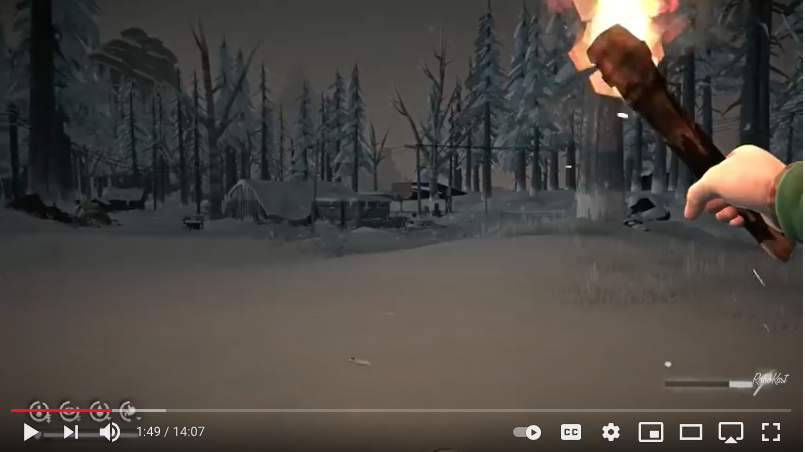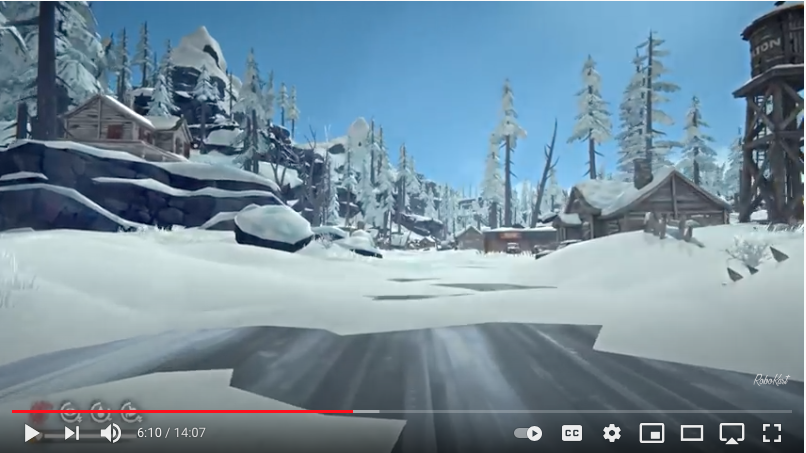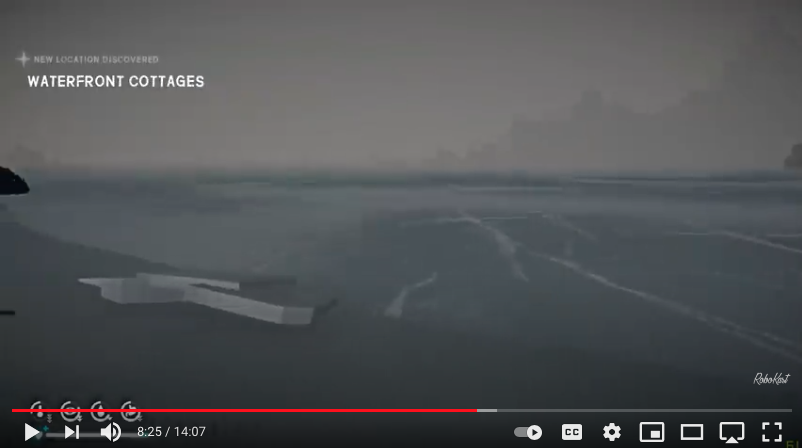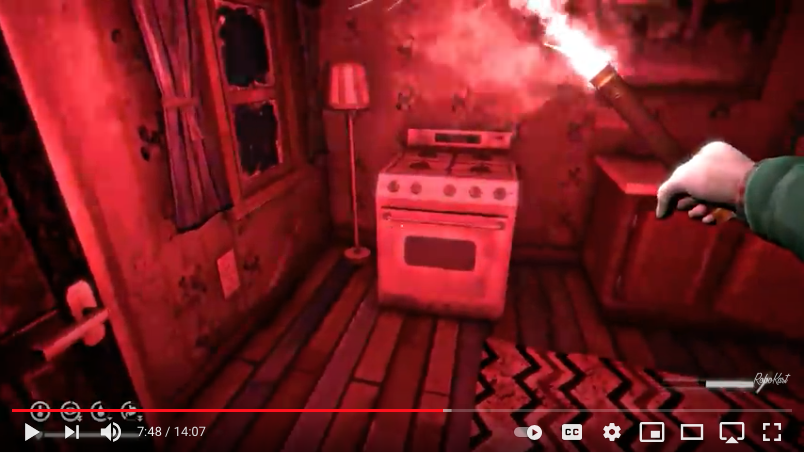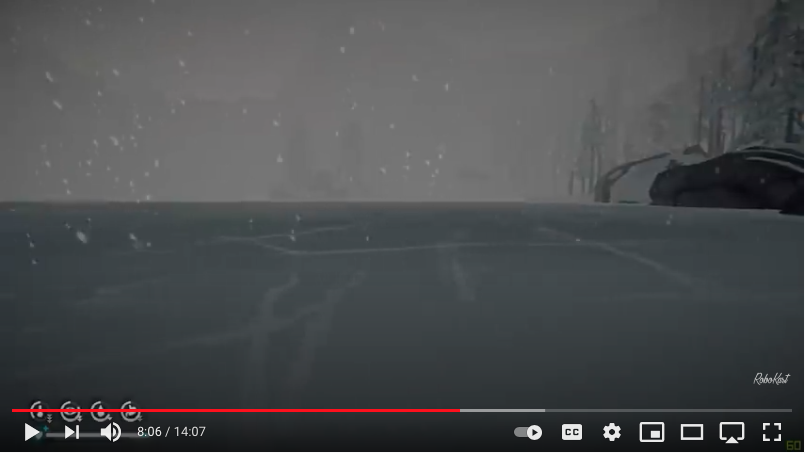Let's talk hands, perspective, and terrible clunky video game inputs for a moment. Some of you may not know this, but I'm an avid oil painter. I painted this painting in about 2 hours, backwards. That means, I *and* my canvas faced a mirror, and I painted over my shoulder.
Now I know, you may think, "Wow what a genius" but the reality is with training most people could do it. The mirror gives the advantage that your painting is right next to your face, so you're effectively just copying a photo next to you. Just need to get used to your hands.
I bet right now a vast majority of you could do this simple thing:
1. Look at an object on your desk.
2. Close your eyes.
3. Reach out and grab it, eyes closed.
You could probably do this 7 or 9 times out of ten reliably without thinking about it unless you have a limitation.
1. Look at an object on your desk.
2. Close your eyes.
3. Reach out and grab it, eyes closed.
You could probably do this 7 or 9 times out of ten reliably without thinking about it unless you have a limitation.
In that painting, as I get to the end I'm using a brush that's about 1/8" in width, aimed over my shoulder, and nailing a spot on the 11x14" panel that's about 1/16" in size with 90% accuracy. It's nothing special, just involves a little training, but it is through a brush.
So, when my video game character robotically stumbles over to a rock on the ground, and then swipes his hand repeatedly to pick it up because the game dev decided the rock has a 1" hit box, I just think, "I can hit a 1/16" hit box with a 16" brush from over my shoulder."
This is the difference between "intent of action" and "accuracy of action". As a human adult I don't think too much about the accuracy of actions I've trained. Picking up a rock is all intent. I think about it, and I pick it up, and I'm surprised if I can't.
If I walk near a fire, my *intent* is to not step into the fire and I don't have to think about that at all. I have to *force* myself to fall into a fire.
Accuracy of action comes up when I'm aiming at something far away such as shooting, but with training even that's automatic.
Accuracy of action comes up when I'm aiming at something far away such as shooting, but with training even that's automatic.
But, even in the case of aiming there's a phenomenon where your brain will "zoom" or "crop down" on the object you're attempting to hit so that it's easier. This is why many people who first learn to draw seem to enlarge the things they see. It's their brain helping accuracy.
Where video games mess up is they arbitrarily decide what is an automatic motion that only requires intent vs. what requires accuracy, and they almost always get it wrong. You'll fall into fires and fumble picking up a rock, but your same clumsy hands can craft a 9mm pistol?
Your clumsy legs get too close to a fire and you burst into flames, but you can accurately run at top speed through a forest at night without tripping, jump on a boulder, spin around, and fire an arrow?
You can't grab a rabbit but can throw a molotov correctly?
You can't grab a rabbit but can throw a molotov correctly?
Perspective and camera position also plays a big part in the distortion of this effect. Here's some stills from The Long Dark, and I want you to look at the horizon line in each one. See how the horizon is set in the middle or close to the top of the viewport?
In landscape painting you learn that the position of the eyes (aka camera) is where the horizon will be, so if you raise the horizon too high is makes it seem like the ground is sloping up and distorts the perceived height of the viewer.
What's weird about many games is when they go into a building suddenly the perspective is corrected, and then outside it's distorted again as if the character shrinks when they walk outside. This combined with how motion seems incredibly slow outside and it feels "clunky".
What this distortion of perspective does is it combines with the accuracy requirement to add unrealistic sluggishness and difficulty that wouldn't exist. It's done *only* to add cheap artificial difficulty instead of designing the world to have its own intrinsic difficulty.
For example, if you move the horizon line up on outside scenes then it makes the world seem larger than it is and more difficult to traverse, rather than just...actually make the world larger and difficult to traverse. Camera tricks are cheap. 3D artists are not.
If you put hit boxes on rocks then people's attempts to grab them through an inefficient mouse or joystick *seems* difficult, which is cheaper than making the actual content of the game difficult such as developing more art for more materials to craft.
So when you're playing a game and it seems like you keep falling into fires, can't pick up simple items, and you feel like your 3 feet tall, then just remember that the game developer is doing that add artificial difficulty rather than develop game content and mechanics.
I also find that game developers will claim "other people do it fine", but what they don't understand is the people who like this are also:
1. Used to it.
2. Using specialized equipment.
They're effectively shaming anyone who doesn't have a fancy mouse and custom keyboard.
1. Used to it.
2. Using specialized equipment.
They're effectively shaming anyone who doesn't have a fancy mouse and custom keyboard.
All of these games are being tested by pros, with only minimal testing from casual regular people. They're handing early access keys to youtubers with a G-mouse, Tartarus V2 keyboard, and $4k computer and basing usability on their feedback, but that's the wrong market.
Even these companies' own testers are pros. You're not going to get the same kind of feedback from a professional game tester as you would from an 11 year old kid with a crappy XBox controller, but their target *should* be the crappy XBox controller.
All this is to say, if some douchebag comes in your mentions shaming you for not being able to use his crap UI, just realize it's not you, it's them and their inability to actually measure the usability of their game for regular folks after they used cheap tricks to save money.

 Read on Twitter
Read on Twitter
